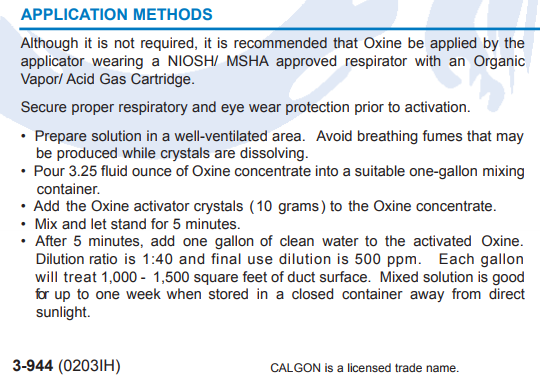wonderment
In the Brooder
- Mar 31, 2017
- 10
- 1
- 17
Hello,
I bought Oxine AH bottles from a dealer. I just have a general question. I have been using Oxine AH with the activator crystal to mist my birds area to disinfect any potential virus or bacteria.
However I wanted to know if the batch I have is not a spoiled batch. Because, when I activate Oxine, or the raw solution from the bottle, has a bit of an algae smell to it. Is this the natural smell of Oxine? It turns greenish yellow after adding the crystals/citric acid as per the instruction, and the diluted water looks greenish after mixing with the activated solution. But, that smell of algae turns my stomach. I thought Oxine would smell like bleach or chlorine or swimming pool but why algae or a fish tank? Please tell me if this is normal because if it is indeed a spoiled batch I wanna be sure my birds area is clear of viruses or other pathogens and I have been trusting oxine will take care of it assuming it is natural smell. If it is not, then I should have to find a solution as I cannot take any chances.
Additional info/contribution : I saw a lot of posts on BYC where people talked about how they don't bother activating Oxine and simply dilute it as per instructions and spray it thinking it will kill viruses or bacteria such as Paromaxyvirus or salmonella or extreme ones like newcastle etc but the truth is, non activated oxine does not even kill molds. It inhibits maybe but it is NOT a solution to disinfect anything. You MUST activate them if your goal is to keep the coop clear of pathogens. It is just a placebo otherwise. I would not be able take that chance. I have confirmed it from the dealer, but regarding my question above, the dealer is out of town and I have no way of contacting them until the mid of Jan. Please let me know.
I bought Oxine AH bottles from a dealer. I just have a general question. I have been using Oxine AH with the activator crystal to mist my birds area to disinfect any potential virus or bacteria.
However I wanted to know if the batch I have is not a spoiled batch. Because, when I activate Oxine, or the raw solution from the bottle, has a bit of an algae smell to it. Is this the natural smell of Oxine? It turns greenish yellow after adding the crystals/citric acid as per the instruction, and the diluted water looks greenish after mixing with the activated solution. But, that smell of algae turns my stomach. I thought Oxine would smell like bleach or chlorine or swimming pool but why algae or a fish tank? Please tell me if this is normal because if it is indeed a spoiled batch I wanna be sure my birds area is clear of viruses or other pathogens and I have been trusting oxine will take care of it assuming it is natural smell. If it is not, then I should have to find a solution as I cannot take any chances.
Additional info/contribution : I saw a lot of posts on BYC where people talked about how they don't bother activating Oxine and simply dilute it as per instructions and spray it thinking it will kill viruses or bacteria such as Paromaxyvirus or salmonella or extreme ones like newcastle etc but the truth is, non activated oxine does not even kill molds. It inhibits maybe but it is NOT a solution to disinfect anything. You MUST activate them if your goal is to keep the coop clear of pathogens. It is just a placebo otherwise. I would not be able take that chance. I have confirmed it from the dealer, but regarding my question above, the dealer is out of town and I have no way of contacting them until the mid of Jan. Please let me know.





